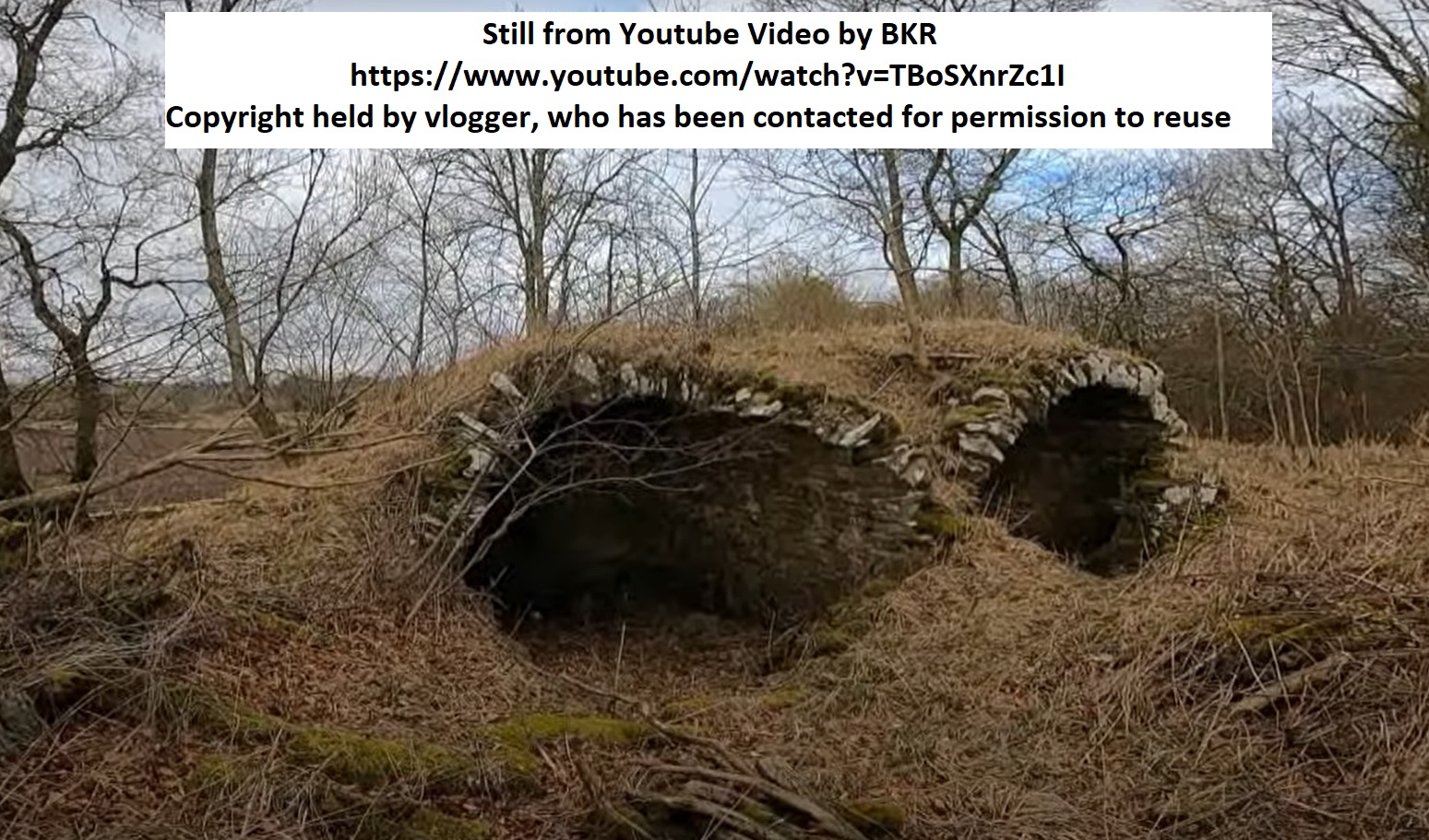Balgavies Castle

Balgavies Castle Details
Balgavies Castle, foundations of tower house of Lindsays destroyed in 1593 by James VI and never rebuilt
- Closest To: Forfar, Letham, Friockheim
- Access: S.O.A.C. Public Access
- Grid Reference: NO540516
Balgavies Castle is a badly ruined tower house on a natural mound hidden within woodland and overlooking a small burn which empties into Balgavies Loch to the south. It cannot be seen from the public road. What remains is two barrel vaults, one of which has the wall at one end fairly intact with a rectangular window opening. LIDAR shows no evidence of the mound having been surrounded by a we ditch, but the land about it has been artificially drained, so understanding the contemporary landscape is not possible, and similarly, understanding the building from the fragmentary remains is also difficult.
The lands of Balgavies are reputed to have been held by the family of Auchterlony of that Ilk, and by the Guthrie family, but certainly by Sir Simon Preston of Craigmillar in 1543. By about 1571, Sir Walter Lindsay of Edzell, fourth son of the earl of Crawford was in possession. Sir Walter was an adherent of the Catholic faith, and housed a Jesuit priest in Balgavies. At this time, the earls of Angus, Huntly and Errol all reverted to their Catholic faith, leading to King James VI destroying the castle in the aftermath of the Battle of Glenlivet, when Huntly defeated the Protestant Argyll in 1593. In 1601, David Lindsay of Balcarras was granted the lands and barony of Balgavies, and there is no mention of the castle . In October 1605 David of Balcarras killed Walter of Balgavies, but the following year Walter’s son David was retoured as his heir to the lands and barony. David’s son, another Walter, then sold the estate in 1630. This was the first in a long series of purchases, but at no point was the castle restored. Instead the mansion house of Balgavies was built to the south, starting out as a late 17th century L-plan laird’s house, a datestone recording the initials “TO” and “AS” as well as the date 1691. A document of 1693 referring to Captain Thomas Ogilvie, late of Balgavies, probably identifies the man responsible.
Become a supporter of my work to access a more detailed history
